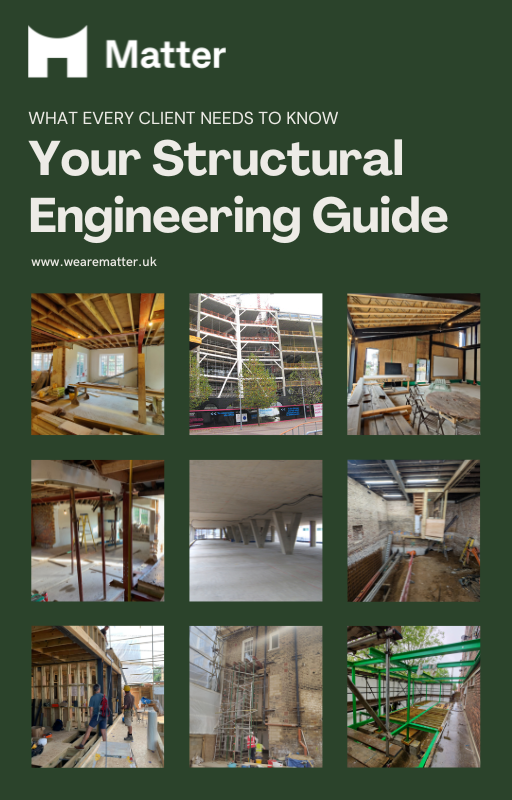What every client needs to know
Your Structural Engineering Guide
This e-book gives you practical insights to help you understand the structural process, make informed decisions, and avoid costly surprises.
Want to contact a Structural Engineer

What’s inside the guide
A step-by-step overview of the structural process
Key risks and how to plan for them
Tips for avoiding delays
A clear outline of Building Control needs
What to expect when working with Matter
Real client feedback from different sectors
Who this guide is for
This guide supports anyone involved in planning or managing building projects, including:
Homeowners
Property developers
Local authorities
Housing associations and public-sector teams
Community organisations
Client representatives and project managers
What you’ll learn
You’ll find clear explanations on:
When and why you need a structural engineer
How structure affects cost, timelines and buildability
Common issues and how to avoid them
Building Control requirements
How early engineering input prevents delays
How to keep communication smooth across teams
What good structural support looks like at each stage
Why this guide matters
Whether you are a homeowner planning improvements, a developer shaping a new scheme or part of a public team delivering community projects, structural engineering affects the safety, cost and success of your work.
This guide removes confusion and gives you clear information so you can make confident decisions from the start.
Why Matter created this guide
Matter is a small, people-focused structural engineering practice in London. We work across homes, housing projects, public buildings and community schemes.
We created this guide to make engineering clearer and easier to navigate. Our work is shaped by:
Care for people and communities
Clear, steady communication
Practical and buildable design
Long-term sustainability
Social value and fairness





